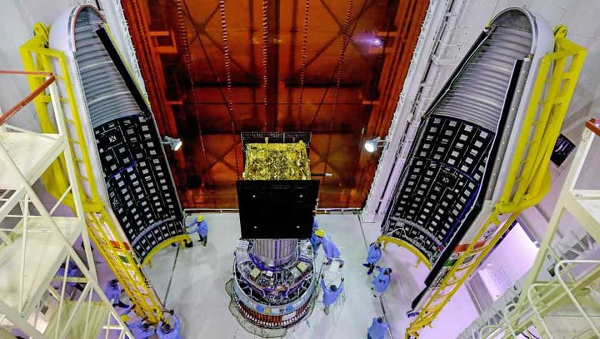After successfully testing an anti-satellite (ASat) missile last month, India is now also working to develop other counterspace capabilities like directed energy weapons (DEWs) and co-orbital killers as well as the ability to protect its own satellites from electronic or physical attacks.
“We are working on a number of technologies like DEWs, lasers, electromagnetic pulse (EMP) and co-orbital weapons etc. I can’t divulge the details, but we are taking them forward,” said DRDO chief G Satheesh Reddy on Saturday. The A-Sat missile that destroyed the Microsat-R satellite, at an altitude of 283-km in the low-earth orbit (LEO) on March 27, was a “directascent, kinetic kill” weapon. It’s “feasible” to target multiple satellites with multiple launches of the three-stage interceptor missile, which can go up to 1,000 km into space,” said the DRDO chief.
After successfully testing an anti-satellite (ASat) missile last month , India is now also working to develop other counterspace capabilities like directed energy weapons (DEWs) and co-orbital killers as well as the ability to protect its own satellites from electronic or physical attacks.
“We are working on a number of technologies like DEWs, lasers, electromagnetic pulse (EMP) and co-orbital weapons etc. I can’t divulge the details, but we are taking them forward,” said DRDO chief G Satheesh Reddy on Saturday. The A-Sat missile that destroyed the Microsat-R satellite, at an altitude of 283-km in the low-earth orbit (LEO) on March 27, was a “directascent, kinetic kill” weapon. It’s “feasible” to target multiple satellites with multiple launches of the three-stage interceptor missile, which can go up to 1,000 km into space,” said the DRDO chief.
“There is a plan to launch mini-satellites on demand for the armed forces if the main satellites are targeted,” said a source. DRDO for long has also been running programmes on a wide variety of DEWs like high-energy lasers and highpowered microwaves capable of destroying aerial and ground-based targets, but whether they can be successfully developed into A-Sat weapons remains to be seen.
DRDO chief G Satheesh Reddy, on his part, said it was for the government to decide on the issue of weaponisation of A-Sat systems or the creation of a fullfledged Aerospace Military Command. “Space has gained importance in the military domain. The best way to ensure security is to have deterrence,” he said. The DRDO chief made it clear that there was no move to conduct additional tests of the new A-Sat missile as of now.
“Though we tested the interceptor missile for an altitude below 300 km as a responsible nation after multiple simulations, it has the technical capability to go beyond 1,000 km. That will cover most of the orbiting satellites in LEO. For the same purpose, we don’t need more tests,” he said. The target satellite was hit with an accuracy of less than 10 cm, on par with “the best reported performances” of such A-Sat missiles worldwide. “So, it meets all our objectives. The successful demonstration of ‘Mission Shakti’ has placed India in the elite club of three countries (US, Russia and China) possessing the A-Sat capability,” Reddy added.
Source:TNN
Image Courtesy:ScoopWhoop
You may also like
-
IAF Aircraft Set Course For Exercise Eastern Bridge VII At Oman
-
IAF Set To Host The Indian Defence Aviation Exposition-II At Jodhpur
-
Defence Secretary to co-chair 5th India-Philippines Joint Defence Cooperation Committee meeting in Manila
-
Simultaneous Launch Of ‘malpe And Mulki’, Fourth And Fifth Ships Of Asw Swc (Csl) Project
-
Aatmanirbharta in Defence: MoD signs Contract with HAL for 240 AL-31FP Aero Engines for Su-30MKI Aircraft
